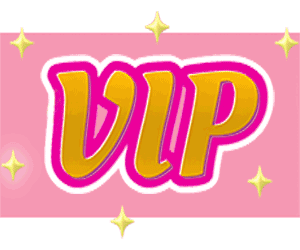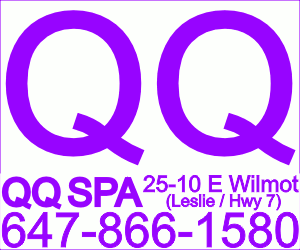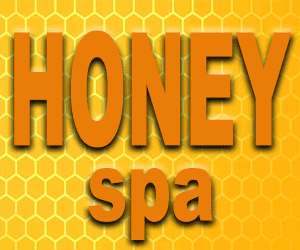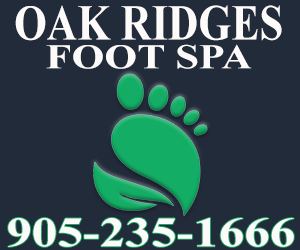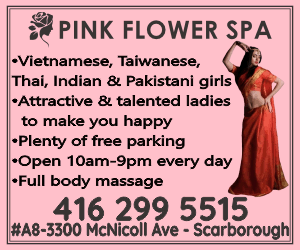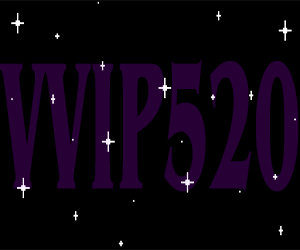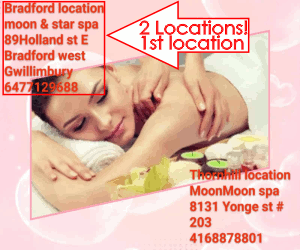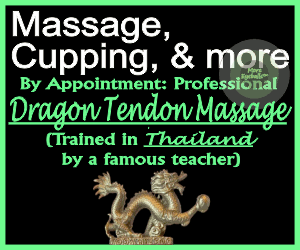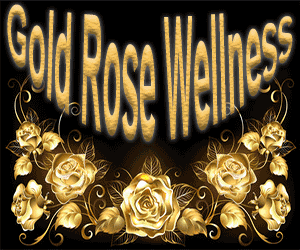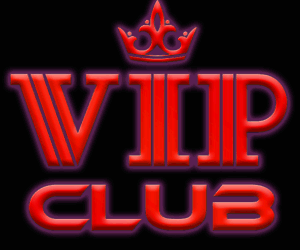M
mnews
Guest
At PEDESTRIAN.TV, we independently choose and write about stuff we love and think you’ll froth too. We have affiliate partnerships so we might get a bit of money from any purchase you make based on our recs, cool? Cool. FYI – prices are accurate and items in stock at the time of posting.
Depending on which side of TikTok you’re on, you’ve probably seen a bunch of people using at-home lymphatic drainage massage techniques and tools (think gua shas and cupping) to help depuff, decrease toxins, and improve their overall blood circulation. In fact, facial Gua Shas have had such a rise in popularity over the last few years that they’re basically considered a normal part of people’s skincare routines.
Curious about what other tools and techniques are available, we spoke to Sarka Straka and Melissa Wright, Endota Spa experts, who explained the ins and outs of lymphatic drainage, techniques you can try at home, and each tool you’ll need and how to use it.

“Lymphatic drainage involves gently manipulating specific areas of your body to move excess fluid buildup away from your tissues and toward working lymph vessels and lymph nodes so they can get rid of toxins in your body,” explains Sarka. Adding regular lymphatic drainage techniques to your skin and body care routine can help promote good skin health.
Lymphatic massage may reduce swelling in your body and make it easier for your lymph nodes to get rid of toxins, explains Sarka. “It helps to improve blood circulation, the lymphatic system and support the drainage of lymph and excess fluid.”
This explains why the TikTok girlies are reaching for their Gua Shas first thing in the AM. Puffy face, be gone!
If you are going to have a massage where you’ve added in some lymphatic drainage, there are a few things you can do to prepare for your professional session. “Wear comfortable, loose clothing,” says Sarka. It’s also advised that you avoid consuming caffeine or alcohol before the massage, and inform the therapist of any pre-existing medical conditions or allergies.
It’s also super helpful to discuss your expectations and concerns with the therapist before starting the massage, so you know what you’re in for when they start whipping out different lymphatic drainage tools.
Post-massage, drink plenty of water to help flush out your system.

“Yes, absolutely, whether you choose to use the facial or the body Gua Sha tool, it is an easy ritual to do, quiet calming and can be easily performed in the comfort of your home,” says Sarka.
If you are going to do them at home, you do need to be aware of any potential side effects or contraindications before you give it a crack. “Lymphatic treatment should be avoided for Cancer patients (unless performed by a certified oncology massage specialist), during pregnancy and if a client has recently had Botox and fillers,” explains Sarka.
And if you have any skin wounds, such as bruises, cuts or sunburn, skip the at-home treatment until it heals.
“Using a facial oil, you hold the Gua Sha tool almost flush to the skin, start at the centre of your face and stroke the skin outwards (making sure to be gentle but firm,” explains Sarka.
You then massage from your nose towards your cheeks, then target your neck using downward motions. The jawline can also be included, sliding from the chin toward the ear.
The body Gua Sha tool is larger than the facial one, but the movements are similar; the tool is also held almost flush to the skin.
Some simple ways to start experimenting with body Gua Shas is to sweep it over the neck, arms, back and legs — like in the video above.
“Using a body oil, slide the Gua Sha from the top of your neck to the edge of your shoulder (repeat three times).”
“On the arms, slide the Gua Sha upwards from your wrist, using gentle but firm pressure (repeat three times). On the legs, slide the Gua Sha up from your ankle to the top of your thigh, on both the front and back of your leg (repeat three times).”
“On the back, slide the Gua Sha downwards on each side of your back, repeating three times. You will need someone to help you with the back, if you wish to try it,” says Sarka.
When using your body (or face) Gua Sha at home, be careful not to apply too much pressure with the tool, explains Melissa. “The tool is not used to alleviate muscle tension.”
She also recommends using it at room temperature and using light pressure over bony areas.
It’s also important to be mindful of the throat when gliding along the neck, as well as any sensitivity that may be experienced when going over the temples.
Start by cleansing your skin and applying three to four drops of a face oil. Then, Melissa recommends choosing the cup size based on the area you’re targeting, before applying it to the skin to create gentle suction.
“Beginning at the centre of the face, glide the cup in an outward direction (or downwards, if you’re cupping your neck area).”
You can see a demo in the video below.
If you are going to try facial cupping at home, Melissa says don’t cup over open sores, warts, or acne, and if you’re prone to broken capillaries or if you are on blood-thinning medication, it’s a straight up no-go.
Also, for my Botox girlies, you’ll need to wait at least two weeks after fresh tox or filler before trying at-home facial cupping.
Melissa recommends starting with a few short five-minute sessions, no more than three times a week, while you get the hang of it.
Ah, the hoof massage. You either love it or hate it. If you fall into the first category (aka my boyfriend), you’re going to wanna get yourself one of these nifty tools. They add a little something to your at-home foot massage that makes it feel borderline professional.
To really elevate the experience, Melissa recommends starting with a foot cleanse before applying three to four pumps of a massage oil to your foot. Then, using the large ball end, press into the sole of the foot and release using a twisting motion. Repeat this five times.
Then, using the flat edge of the narrow tip, twist and stroke between the toes. Repeat five times. Repeat the sequence on the other foot without a foot massage tool.
To finish, Melissa recommends wiping away the excess oil with a hot towel before rubbing a foot cream into the hooves.
Trigger balls are a great at-home tool to help provide some targeted relief from muscle pain and release tension that’s built up over time. The trick to using them correctly is actually not applying too much pressure to the area, you simply want to work through and release the tension.
Melissa recommends utilising a wall or the floor for support and rolling the ball around to relax the muscles. “When using a wall, position the ball on or near the area you want to massage, and hold it in place with the help of the wall. Then, roll the ball in circular motions, up and down, or side to side by slowly moving your body.”
It’s not too dissimilar to how you’d use a foam or cork roller at home. Melissa again advises that using the floor or wall to help you get stuck into your tension points can be super helpful.
Just always remember to use at-home devices safely and clean them according to the manufacturer’s instructions. If anything starts to cause pain, cease use immediately.
You can shop Endota’s at-home range below.

Gua Sha Body Tool, $45

Cork Cylinder Roller, $45

Gua Sha Facial Tool, $35

Trigger Point Ball, $20

Facial Cupping Set, $45

Foot Massage Tool, $20
Image Credit: Endota
Depending on which side of TikTok you’re on, you’ve probably seen a bunch of people using at-home lymphatic drainage massage techniques and tools (think gua shas and cupping) to help depuff, decrease toxins, and improve their overall blood circulation. In fact, facial Gua Shas have had such a rise in popularity over the last few years that they’re basically considered a normal part of people’s skincare routines.
Curious about what other tools and techniques are available, we spoke to Sarka Straka and Melissa Wright, Endota Spa experts, who explained the ins and outs of lymphatic drainage, techniques you can try at home, and each tool you’ll need and how to use it.

What is lymphatic drainage?
“Lymphatic drainage involves gently manipulating specific areas of your body to move excess fluid buildup away from your tissues and toward working lymph vessels and lymph nodes so they can get rid of toxins in your body,” explains Sarka. Adding regular lymphatic drainage techniques to your skin and body care routine can help promote good skin health.
What are the benefits of lymphatic drainage?
Lymphatic massage may reduce swelling in your body and make it easier for your lymph nodes to get rid of toxins, explains Sarka. “It helps to improve blood circulation, the lymphatic system and support the drainage of lymph and excess fluid.”
This explains why the TikTok girlies are reaching for their Gua Shas first thing in the AM. Puffy face, be gone!
How should you prepare for a massage with lymphatic drainage components?
If you are going to have a massage where you’ve added in some lymphatic drainage, there are a few things you can do to prepare for your professional session. “Wear comfortable, loose clothing,” says Sarka. It’s also advised that you avoid consuming caffeine or alcohol before the massage, and inform the therapist of any pre-existing medical conditions or allergies.
It’s also super helpful to discuss your expectations and concerns with the therapist before starting the massage, so you know what you’re in for when they start whipping out different lymphatic drainage tools.
Post-massage, drink plenty of water to help flush out your system.

Can you do lymphatic drainage treatments at-home?
“Yes, absolutely, whether you choose to use the facial or the body Gua Sha tool, it is an easy ritual to do, quiet calming and can be easily performed in the comfort of your home,” says Sarka.
If you are going to do them at home, you do need to be aware of any potential side effects or contraindications before you give it a crack. “Lymphatic treatment should be avoided for Cancer patients (unless performed by a certified oncology massage specialist), during pregnancy and if a client has recently had Botox and fillers,” explains Sarka.
And if you have any skin wounds, such as bruises, cuts or sunburn, skip the at-home treatment until it heals.
Can you walk us through a basic facial Gua Sha routine?
“Using a facial oil, you hold the Gua Sha tool almost flush to the skin, start at the centre of your face and stroke the skin outwards (making sure to be gentle but firm,” explains Sarka.
You then massage from your nose towards your cheeks, then target your neck using downward motions. The jawline can also be included, sliding from the chin toward the ear.
Can you walk us through a basic body Gua Sha routine?
The body Gua Sha tool is larger than the facial one, but the movements are similar; the tool is also held almost flush to the skin.
Some simple ways to start experimenting with body Gua Shas is to sweep it over the neck, arms, back and legs — like in the video above.
“Using a body oil, slide the Gua Sha from the top of your neck to the edge of your shoulder (repeat three times).”
“On the arms, slide the Gua Sha upwards from your wrist, using gentle but firm pressure (repeat three times). On the legs, slide the Gua Sha up from your ankle to the top of your thigh, on both the front and back of your leg (repeat three times).”
“On the back, slide the Gua Sha downwards on each side of your back, repeating three times. You will need someone to help you with the back, if you wish to try it,” says Sarka.
When using your body (or face) Gua Sha at home, be careful not to apply too much pressure with the tool, explains Melissa. “The tool is not used to alleviate muscle tension.”
She also recommends using it at room temperature and using light pressure over bony areas.
It’s also important to be mindful of the throat when gliding along the neck, as well as any sensitivity that may be experienced when going over the temples.
Can you walk us through a basic facial cupping routine?
Start by cleansing your skin and applying three to four drops of a face oil. Then, Melissa recommends choosing the cup size based on the area you’re targeting, before applying it to the skin to create gentle suction.
“Beginning at the centre of the face, glide the cup in an outward direction (or downwards, if you’re cupping your neck area).”
You can see a demo in the video below.
If you are going to try facial cupping at home, Melissa says don’t cup over open sores, warts, or acne, and if you’re prone to broken capillaries or if you are on blood-thinning medication, it’s a straight up no-go.
Also, for my Botox girlies, you’ll need to wait at least two weeks after fresh tox or filler before trying at-home facial cupping.
Melissa recommends starting with a few short five-minute sessions, no more than three times a week, while you get the hang of it.
Ah, the hoof massage. You either love it or hate it. If you fall into the first category (aka my boyfriend), you’re going to wanna get yourself one of these nifty tools. They add a little something to your at-home foot massage that makes it feel borderline professional.
To really elevate the experience, Melissa recommends starting with a foot cleanse before applying three to four pumps of a massage oil to your foot. Then, using the large ball end, press into the sole of the foot and release using a twisting motion. Repeat this five times.
Then, using the flat edge of the narrow tip, twist and stroke between the toes. Repeat five times. Repeat the sequence on the other foot without a foot massage tool.
To finish, Melissa recommends wiping away the excess oil with a hot towel before rubbing a foot cream into the hooves.
How can we use a cork trigger ball at home?
Trigger balls are a great at-home tool to help provide some targeted relief from muscle pain and release tension that’s built up over time. The trick to using them correctly is actually not applying too much pressure to the area, you simply want to work through and release the tension.
Melissa recommends utilising a wall or the floor for support and rolling the ball around to relax the muscles. “When using a wall, position the ball on or near the area you want to massage, and hold it in place with the help of the wall. Then, roll the ball in circular motions, up and down, or side to side by slowly moving your body.”
It’s not too dissimilar to how you’d use a foam or cork roller at home. Melissa again advises that using the floor or wall to help you get stuck into your tension points can be super helpful.
Anything else we should know about trying these at-home techniques?
Just always remember to use at-home devices safely and clean them according to the manufacturer’s instructions. If anything starts to cause pain, cease use immediately.
You can shop Endota’s at-home range below.

Gua Sha Body Tool, $45

Cork Cylinder Roller, $45

Gua Sha Facial Tool, $35

Trigger Point Ball, $20

Facial Cupping Set, $45

Foot Massage Tool, $20
Image Credit: Endota






















